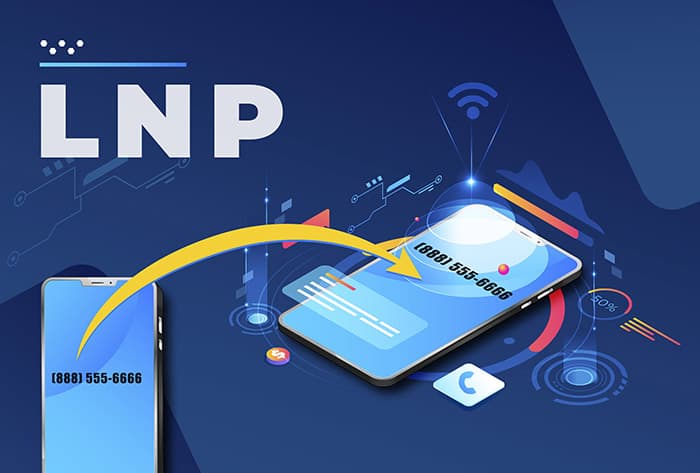Looking to change your phone service provider to one that has better quality and prices but you don’t want to change your current phone number? Local number portability (LNP) makes this possible with little to no work on your part. Here is an in-depth post explaining how LNP works and how you can switch phone service providers without losing your number.
Local Number Portability (LNP): Definition
Local number portability (LNP) or number porting enables users to port or “move” their phone number from one service to the other while keeping the number intact. In other words, with number porting, you can switch providers but keep your local number the same. This is a feature offered by telecom service providers.
Originally, changing your phone service provider meant getting a new phone number. Users would then have to go through the hassle of providing their contacts with a new number. Businesses, on the other hand, would have to start advertising their new number and may still miss out on valuable customers that call the old number instead.
To ease this issue, the Telecommunications Act of 1996 mandated that local exchange carriers make this feature available for users in large metropolitan markets. LNP is regulated by the Number Portability Administration Center appointed by the Federal Communications Commission (FCC). In 2003, the FCC required all wireless providers to offer wireless number portability. This allows mobile users to retain their numbers when switching mobile providers.
How Does LNP Work?
Local Number Portability works through the Location Routing Number (LRN) feature. With this feature, users can switch service providers or even physical locations and still retain their phone number. When customers switch providers, a new LRN is assigned to their phone number (instead of a new phone number being provided).
Every local exchange carrier and long-distance carrier must know what LRN this phone number has attached. This way, when someone calls this number, the carriers can route the call to that LRN. The NPAC logs, updates, and monitors all LRNs in the Local Service Management System (LSMS) databases and distributes the information among carriers.
Local Number Portability Rules for Carriers
To use LNP, you must contact your new carrier and they will begin the process of porting your number by contacting your current carrier. Users may have to provide identification such as a recent bill with their name and address registered in the current carrier’s database. According to the FCC rules, carriers:
- Must port a number upon receiving a valid request
- May not refuse to port a number
- Are allowed to charge for porting services
- Are allowed to charge an early termination fee, especially for long-term customers
- May refuse to port if the customer has not paid for porting
Benefits of LNP
So, why should you change phone service providers? And why should you port your number? There are many reasons why a personal or business user will want to port their number to a new provider. Reasons to change your phone service provider include:
- Changing physical locations or relocating
- Low voice quality and high monthly bills
- Limited access to advanced virtual communication features
- Stuck in long-term commitments
- Lack of reliable customer support
By using local number portability, you can easily port your current phone number to a new provider to get better and cheaper service and access to more features. Additionally, you can even retain your number when you move to a new location within the country.
How Can I Port My Number?
Porting your number is easy but requires a few steps, most on the part of the carriers. In fact, the FCC has a comprehensive number portability checklist that interested users can check out.
To port your number to a new service, you can simply submit a request on the new carrier’s website or get in touch with their customer service/ sales team. A representative will contact you and let you know the next steps; these include:
- The old service provider confirms the user’s identity and notifies the new provider.
- The new provider notifies NPAC.
- NPAC creates a pending port and notifies the old provider to concur.
- The new provider asks NPAC to activate the port.
- Upon activation, the port is broadcasted to the telecom industry network.
- Your new service will be activated.
Port Your Number With Us!
To port your number to United World Telecom, simply fill and submit this porting request form. Our customer service team will get in touch with you to get the process started as soon as possible. To learn more about our local number portability service, speak with our representatives today!

